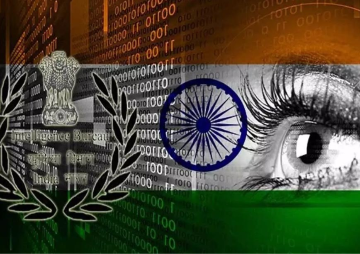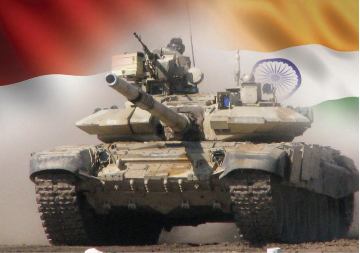Since its inception in 1985, the efficacy of the South Asian Association for Regional Cooperation (SAARC) as a viable institutional mechanism that can facilitate the collective development and security of the region has come under increasing scrutiny. As the heads of the eight South Asian nations meet at the 18
th SAARC Summit on November 26 in Kathmandu, one may be forgiven for questioning whether any concrete results are likely to emerge, or if the self defeating cycle of summits that lead to declarations to form expert groups, who create studies that ultimately gather dust in libraries and bureaucratic shelves is bound to continue.
Despite the failures of the past, the repeated declarations by the Indian Prime Minister Narendra Modi of the need to reinvigorate ties with neighbouring states have created a renewed interest in the possibilities of multilateral cooperation under SAARC. As the leader of the founding member country of SAARC, Bangladesh’s Prime Minister Sheikh Hasina has consistently emphasised on the need for greater cooperation in the region. A certain sense of hope has been created via statements by the Indian and Bangladeshi governments to sign declarations on the crucial issues of energy and connectivity at the Summit.
However, whether these declarations have any specific time-bound provisions for implementation, particularly in the realms of infrastructure development, remains a question. In addition, several contemporary challenges have endangered the entire South Asian region and current provisions under SAARC are either inadequate or are missing altogether to elicit a collective response. This article firstly examines the constraints of SAARC as an institution, followed by an examination of the long term opportunities espoused by the three agreements that are expected to be signed at the 18th SAARC Summit. The subsequent section of the article undertakes an analysis of two immediate threats that confront South Asian countries and the ability of SAARC to adequately mitigate them.
Constraints of SAARC: •
A restrictive mandate: The creation of SAARC by Bangladesh’s President Ziaur Rahman was initially looked upon with suspicion by both India and Pakistan. India suspected SAARC to be a platform that will be used by the smaller South Asian countries for ’ganging up’ against it, while Pakistan viewed it as an instrument of perpetuating Indian hegemony in the subcontinent. Subsequently, India insisted on the adoption of Article X within the SAARC Charter. This article has two provisions: Firstly it enshrined the principle of unanimity in decision making, and secondly it excluded all bilateral and contentious issues from deliberations (SAARC 1985). These two provisions and India’s general preference of bilateralism over multilateralism has constrained the decision making powers of SAARC and effectively eschewed the discussion of critical issues that have been labeled ’contentious’, thereby perpetuating conflicts which in turn impinged on regional cooperation.
•
Indo-Pak rivalry: One of the greatest impediments to the functioning of SAARC has been the continued military and political conflict between the nuclear armed India and Pakistan. In the face of continued rivalry and the perception among some policymakers in Pakistan that economic and other issues must take a backseat unless the Kashmir dispute is resolved, the SAARC summits of late has been termed by one analyst as the ’India-Pakistan show’. Pakistan has also refused to give ’Most Favoured Nation’ status to India, and the low level of trade between the two countries has had a crippling effect on the goal of regional economic integration. Ironically although Article X was meant to insulate SAARC from bilateral and contentious issues, the very functioning of SAARC has been undermined by this bilateral dispute between India and Pakistan.
These two are among a range of issues that have held back SAARC as a regional institution. However, as has been documented by Murthy (2000), SAARC not only remains to be the pre-eminent regional institution in South Asia, but many major breakthroughs have been achieved in reducing tensions between India and Pakistan on the sidelines of Summits. Analysts such as Jha (2007) have rightly stated that there is great scope for cooperation between SAARC countries on non-controversial issues such as the environment. In this light, how the three agreements that are expected to be signed can best facilitate the long-term goals of regional energy integration and connectivity needs to be examined.
Long-term goals of the 18th SAARC Summit The upcoming SAARC summit is expected to see the signing of three important declarations:
1) SAARC Framework Agreement for Energy Cooperation (Electricity)
2) Motor Vehicle Agreement for the Regulation of Passenger and Cargo Vehicular Traffic
3) SAARC Regional Agreement on Railways
The exact details of the three agreements are yet to be released. However, at the risk of speculation, media reports have suggested that the agreement on energy will cover issues such as the enabling of cross border trade in electricity, the development of a common regulatory mechanism, considerations of the waiving of customs fees and the promotion of competition in the energy market. For Bangladesh, gaining access to the electricity market in Bhutan and Nepal through Indian territory will be of primary importance, while India’s extensive portfolio is expected to include the transmission of electricity from the North East through Bangladesh. The motor vehicle agreement will allow vehicles of South Asian states to ply in their neighbourng countries’ territories for transportation of cargo and passengers, while the rail agreement is meant to enable low-cost, energy efficient and environmentally sustainable transportation in the SAARC region.
From the very limited information that is available on the agreements, one question that may be asked is whether provisions have been made in the three agreements for the collective development and upgrading of energy, road and rail infrastructure and if any of the segments of cooperation have time-bound deliverables. The term collective is important here, as the purpose of energy and connectivity should not be limited to economic goals but they can also be used as confidence building measures between the countries of South Asia. For this to happen, the responsibility of reviving the Grand Trunk Road or implementing the SAARC Energy Grid would be best undertaken by a regional organization that can coordinate with national actors. The piecemeal approach of national actors working towards a regional goal by developing infrastructure only within their own territories would not have the desired level of efficiency or technical expertise as compared to the holistic approach of a regional body. A legitimate argument against this notion is that a regional body will unnecessarily complicate and even delay projects. However, a long-term vision will justify the necessity of a regional approach as it can have the essential impact of binding together the bureaucratic and technical elements in South Asia, which will increase the variety of stakeholders in the integration process and incentivize peace building. It needs to be reiterated that the impact of all three agreements will be magnified if time-bound deliverables are factored in during subsequent follow-up meetings at the Ministerial or Secretarial levels. These deliverables should not be constrained to the formation of groups or the commissioning of studies but constitute of actual progress in issues such as land acquisition, environmental clearances and the floating of tenders.
Immediate threats The agreements discussed above can have great economic, political and social benefits in the long-term. However, South Asia currently faces grave external threats which have not yet seen a concerted regional response. This section examines whether the upcoming SAARC summit has any relevance towards efforts to counter two contemporary threats facing the region: the rise of the Islamic State (IS) and the Ebola Virus.
The Islamic State: The rise of the IS has not only thrown West Asia into chaos, it has the potential to have severe security concerns for South Asian countries. Already, the brutal terrorist organization has made its mark in Bangladesh, where one recruiter and three would be recruits have been arrested. In India, the IS has made overtures to recruit youngsters with reports of Indian citizens joining the group in recent months. Pakistan and Afghanistan, already reeling with home-grown insurgencies have also been the target of recruitment and propaganda by the IS.
The ratification of the SAARC Regional Convention on the Suppression of Terrorism and its Additional Protocol in 1988 and the creation of the SAARC Terrorist Offences Monitoring Desk (STOMD), which is meant to form a collective pool and source of information related to terrorism, has had little or no impact on the reduction of terrorism in the region. The last meeting of the STOMD was held as far back as 2011. The need to collectively counter terrorism is bound to come up for discussion in Kathmandu, with Prime Minister Sheikh Hasina declaring her intention to speak about the issue. However, given the use of social media and internet chat sites by the IS to recruit members from South Asian countries, the need to increase the cooperation via the STOMD, particularly in the realm of cyber monitoring and information sharing among customs officials, should be implemented without further delay.
The Ebola virus: The Ebola Virus has so far killed 5,420 people in the West African region. The highly contagious nature of Ebola combined with poor health infrastructure, low patient to doctor ratios, high population densities and porous borders make South Asia particularly vulnerable to this deadly disease. Although the SAARC Health Ministers launched the SAARC Regional Strategy on Communicable Diseases in 2012, one wonders why there have not yet been any emergency meetings at the SAARC level on the dangers posed by Ebola, considering that such a meeting was held in 2003 to address the breakout of the Severe Acute Respiratory Syndrome (SARS) virus. Although Ebola is likely to come up for discussion, declarations and recommendations are hardly adequate to contain a disease that can have catastrophic consequences for the region. In this regard, prompt and collective action is required to set up a regional monitoring cell, comprising health, customs and border protection officials. A contingency plan in the event of an outbreak also needs to be drafted and ratified.
Expectations from the Summit The three declarations on energy and connectivity that will be tabled on the 26th of November are of great importance to the long term goal of regional integration of South Asia. However, whether these declarations will lead to the political commitment to time-bound projects, especially in the joint construction of cross-border electricity transmission lines, and road and rail networks, is up for debate. On the other hand, as substantiated in the analysis above, the Islamic State and the Ebola virus pose immediate threats to the region, which also need to be accounted for, not simply by highlighting them in speeches and declarations, but through exploring ways of using the existing mechanisms in SAARC to undertake timely action.
Over its 29 years of existence SAARC has come under a substantial amount of criticism for its lack of progress in stimulating cooperation. However, it stands to reason that as the preeminent regional body, it is the only channel through which both the long term visions of regional energy cooperation and transport connectivity and the immediate needs of confronting the IS and Ebola can be achieved collectively.
(The writer is a Visiting Fellow at Observer Research Foundation, Delhi and a PhD candidate at the Centre for Social Responsibility in Mining, the University of Queensland)
The views expressed above belong to the author(s). ORF research and analyses now available on Telegram! Click here to access our curated content — blogs, longforms and interviews.




 PREV
PREV

